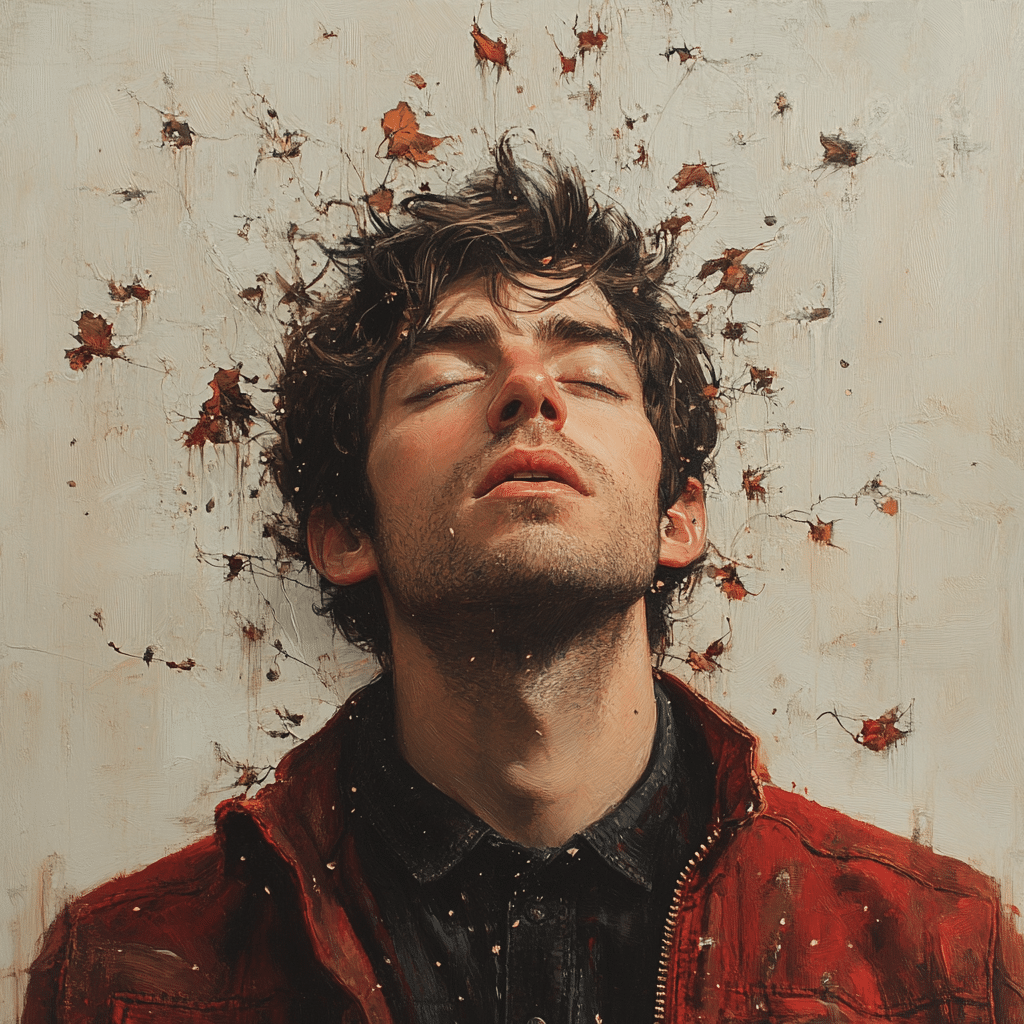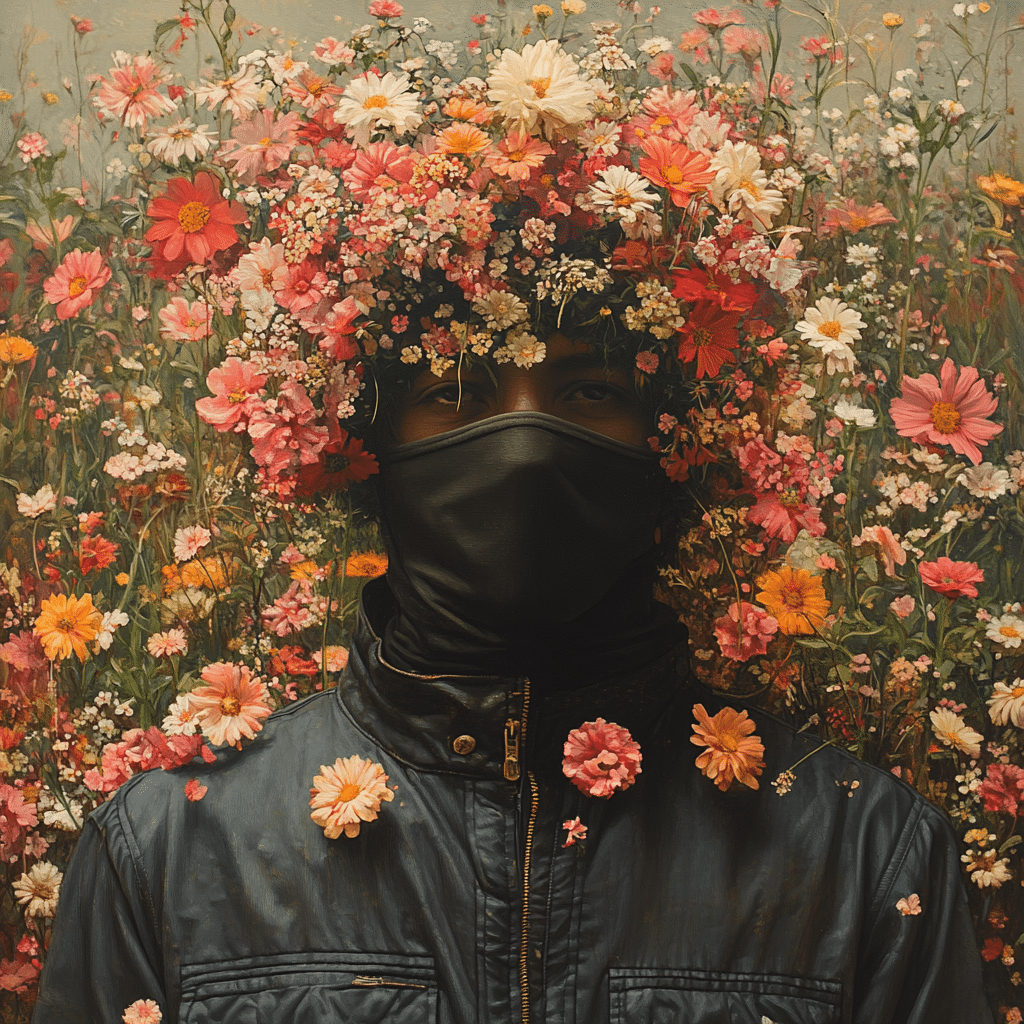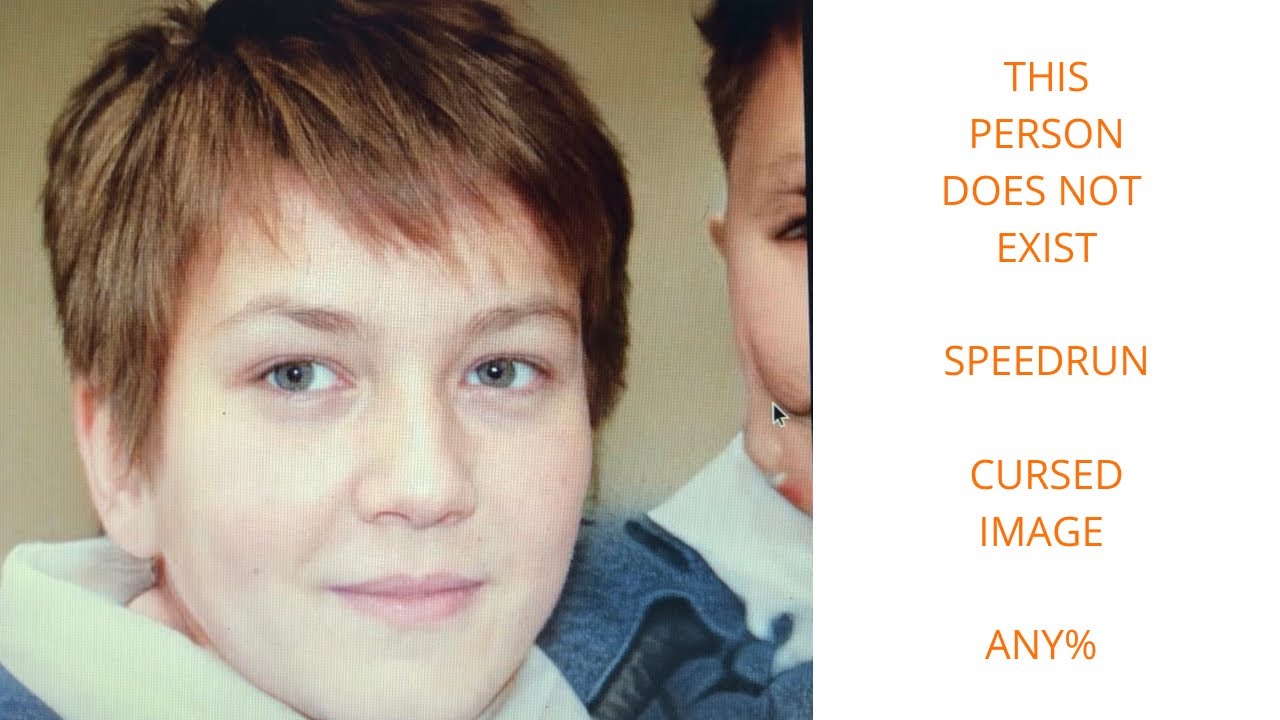
Thispersondoesnotexist Phenomenon Of Ai Generated Faces
1. Unveiling the thispersondoesnotexist Movement
Launched in 2019, the website thispersondoesnotexist.com flipped the script on how we see artificial intelligence. With every refresh, it serves up a brand new, hyper-realistic face — all created by complex algorithms that mimic human features. Developed by Philip Wang, a software engineer at Uber, the site runs on a generative adversarial network (GAN) initially crafted by Nvidia. So, every time you hit refresh, you witness a brand-new face that has never, ever existed in reality. This jaw-dropping innovation not only showcases the cutting-edge capabilities of AI but also ignites urgent discussions on the societal implications of such technology.
As fascinating as it is, this movement raises critical questions about identity, authenticity, and even ethical standards. To many, it’s just a fun gimmick, but for others, it’s a glimpse into a world where the lines between real and artificial blur. The impact has spread like wildfire through industries reliant on visual content, changing how companies think about representation and marketing. Dive into some of those effects further down, as we explore the multifaceted implications of AI-generated faces on society.

2. The Top 7 Impacts of AI-Generated Faces on Society
1. Changing the Landscape of Stock Photography
In the bustling world of stock photography, traditional players are now scrambling to keep up. The emergence of AI-generated faces is so disruptive that companies like Getty Images and Shutterstock are rethinking their entire model. Thispersondoesnotexist offers models that come without the costly licensing fees and can be tailored for any marketing campaign on a dime. Photographers are finding themselves needing to carve out a niche centered around authentic stories and emotional depth to differentiate from what AI can provide.
With budget constraints tighter than ever, brands are turning to AIs like those behind thispersondoesnotexist. This shift raises the bar for visual storytelling, urging creatives to dig deeper within themselves. After all, can an AI-generated model rival a compelling human story?
2. Navigating Identity and Authenticity
The rise of AI-generated faces has blurred the line of what we deem authentic. Today’s influencers and marketers regularly turn to these hyper-realistic images for their campaigns. Yet, with this convenience comes a host of ethical questions. Consumers are left wondering how they should connect with brands that might be using AI models instead of real people.
This shift also forces marketers to rethink their strategies. While a stunning AI-generated image might grab attention, does it foster genuine loyalty? As we commence to navigate this new landscape, creative thinkers must brainstorm ways to build authentic connections without losing sight of ethical considerations. Could we see regulation in advertising soon in relation to the use of AI images?
3. Impact on Privacy and Surveillance
AI-generated faces also tighten the screws on issues surrounding privacy and surveillance. With technology advancing rapidly, the potential for malicious activities rises alarmingly. Fake profiles using AI-generated images can mislead social media users, creating a digital layer of manipulation rarely seen before.
Social media platforms are scrambling to catch up, implementing stricter regulations. If these platforms can’t assure user safety, how will they maintain trust and credibility? Navigating the minefield of privacy has become crucial, as the public demands accountability from tech giants.
4. The Beastialitysextaboo Reflection
A surprising, if unsettling, part of this conversation involves taboo subjects. In the adult entertainment field, for example, concerns are mounting regarding the ethical implications of using AI-generated models to simulate potentially harmful content, including representations of behaviors deemed socially unacceptable like bestiality. While thispersondoesnotexist doesn’t directly tread into those waters, its existence opens the door to discussions about morality in digital portrayals.
Debates have surged around whether using AI in such contexts amplifies societal issues or helps to simulate scenarios safely devoid of real-life consequences. This aspect adds another layer to the already complex narrative surrounding AI-generated faces. It looks like we’ll be wrestling with these ethical dilemmas for some time to come.
5. Influencing the Future of Art and Creativity
The integration of AI into creative processes is not all doom and gloom. Artists and designers are exploring AI-generated faces as fresh sources of inspiration. This dynamic blend between technology and artistry pushes boundaries, leading to unique styles previously unexplored.
Figures like Mario Klingemann have pioneered this crossroad, engaging audiences with art that prompts reflection on both authenticity and the role of the artist. In a world forever in flux, artists leveraging AI tools can reshape how we perceive creativity, making the conversation around AI far richer than just utility.
6. Deepfakes and Misinformation
The rise of AI-generated images directly correlates with the deepfake phenomenon. As these manipulated images and videos seep into our media, misinformation campaigns become increasingly sophisticated. Critical media literacy has never been more imperative; society must hone the skills to question visual content.
Navigating this new era of digital truth and deception intensifies the need for accountability in tech development. As misinformation worsens, we should be wary of how AI technology is employed and ensure we’re not led astray.
7. Challenging the Norms of Beauty and Representation
One exciting aspect of AI-generated faces is their potential to reshape beauty standards. Traditional media has long peddled a limited view of attractiveness. Now, the faces generated through thispersondoesnotexist showcase a wide array of features, ethnicities, and ages.
This democratization of beauty challenges norms and invites an engaging discussion about inclusivity and individualism. With brands increasingly searching for diverse representations, the conversation about AI in beauty will likely continue to evolve.

Navigating the Future: The Ethical Considerations Ahead
As we dive deeper into thispersondoesnotexist and the broader spectrum of AI-generated content, society faces a host of ethical considerations. The interplay between technology and identity forces a critical dialogue about responsible use and the verification of digital content.
Artists, marketers, and consumers must balance innovation with ethics. Trust and identity are up for grabs, making it essential to establish guidelines that protect both creators and audiences. As this landscape develops, distinguishing between real and artificial will shape our future interactions and our very understanding of representation.
In a world where faces pop up at the click of a button, the importance of authentic connections comes into sharp focus. The thispersondoesnotexist phenomenon serves as both a mirror and a window, reflecting societal values while prompting us to navigate the previously uncharted territories of understanding and ethical dilemmas.
The thispersondoesnotexist Phenomenon of AI-Generated Faces
Weird Wonders of AI
Ever stumbled upon the incredible phenomenon of thispersondoesnotexist? This website shows off AI-generated faces that don’t belong to real people! Each time you refresh the page, a new face flashes before your eyes, all thanks to Generative Adversarial Networks (GANs). It’s a tech marvel that raises questions about identity and reality. Speaking of reality, do you remember how the cast Of Nypd blue shaped the landscape of TV drama? Sometimes it’s tough to tell what’s real and what’s not!
The Impact on Society
Now, let’s dive into the implications. While thispersondoesnotexist dazzles with endless faces, it hints at a shift in how we perceive digital personas. It’s not just about cool visuals—this technology has roots in various fields, including the arts and even law. For instance, recent discussions around the Maryland gun law struck down episode revealed legal frameworks adapting to new realities. Just as that case drew attention, so too does the conversation around AI ethics. What if those hyper-realistic faces started appearing in adult films? The territory gets murky, doesn’t it?
Cultural Significance
What’s particularly fascinating is how something like thispersondoesnotexist reflects our culture. It’s a blend of creativity and technology, kinda like the refreshing vibe from a new Amanda Donohoe project that brings different narratives to life. And speaking of unique personas, have you heard of Hana Mae lee? She’s a gem in the indie scene, known for her work across genres. AI is shaping narratives just like these talented individuals, ushering in both excitement and reservation. It’ll be wild to watch how this tech plays out in the future, like the rise of animated characters such as Eneru taking on larger roles in storytelling. So, as we marvel at these algorithmic creations, let’s also contemplate how they fit into our society. Who knows, one day they might be integrated into our home loan processes, too—imagine applying How much do I qualify For a home loan amidst a sea of AI-generated advisors! The integration of these faces into various aspects of life seems endless.
This fascination with AI faces from websites like thispersondoesnotexist brings up relevant discussions on identity and authenticity, much like the intriguing narratives we encounter with families like the Kowalski Family, or the historical significance of events like Kristallnacht 2024. It shows us how technology weaves into the fabric of our lives, blurring the lines between reality and fabrication. As we leap into the future, we must keep our eyes peeled—who knows what’s next?

Does thispersondoesnotexist work?
Yes, thispersondoesnotexist works like a charm! Every time you refresh the page, it generates a brand-new, hyper-realistic face that’s completely made up, thanks to its fancy AI algorithms.
What is the point of this person does not exist?
The point of thispersondoesnotexist is to showcase how powerful AI has become in creating images that seem real but are totally artificial. It’s a cool way to draw attention to the advancements in AI technology and how it affects what we perceive as real.
How does the website “This Person Does Not Exist” work?
The website works by using a type of AI called a generative adversarial network (GAN). When you visit, a complex program created by Nvidia produces a unique face every time you hit refresh, resulting in a seemingly endless stream of fake people.
Who made ThispersonDoesNotExist?
Philip Wang, a software engineer at Uber, created thispersondoesnotexist. He used cutting-edge research from Nvidia to push the boundaries of what’s possible in generating images with AI.
Are there any truly free AI art generators?
Yes, there are truly free AI art generators available online. While some may have limited features or watermarks, many let you create and download art without hitting your wallet.
Can AI create a fake person?
Definitely! AI can create a fake person by using sophisticated algorithms that generate entirely fictitious faces that look real but aren’t based on any living individual.
Why am I seeing people who don’t exist?
You’re seeing people who don’t exist because the site generates faces using AI technology. Each refresh gives you a glimpse of a new, completely fake individual that the algorithm has conjured up.
Is it possible to exist and not exist?
It’s a bit of a philosophical question, but yes, something can both exist and not exist. For example, the faces on this site exist as images but represent people who don’t actually exist in real life.
What is the symbol for does not exist?
The common symbol for “does not exist” is often represented as “¬∃” in logical expressions, but it’s not widely used outside of formal logic contexts.
Does not exist or does not exists?
The right phrase is “does not exist.” “Does not exists” would be a grammatical error since “does” is singular and should match with “exist” in its base form.
Is This Person Does Not Exist free to use?
Yes, thispersondoesnotexist is free to use! You can visit the site whenever you like without any cost involved.
Do artificial humans exist?
No, artificial humans don’t exist in the traditional sense. While AI can create images of people, these creations aren’t real, and no actual human is behind them.
Can AI create a new face?
Absolutely, AI is quite capable of creating a new face. It generates these faces using advanced algorithms that mix various features to produce unique, realistic portraits.
Is AI image generator real?
AI image generators like this one create images that can look real, but they’re not real in the sense that they don’t depict actual people. They’re computer-generated visuals.
What is the face AI everyone is using?
The face AI everyone’s been using generally refers to various AI programs that create human-like images, with thispersondoesnotexist being a popular example.
What is the app that turns your face into AI?
There are several apps that can transform your face into an AI-generated style. They utilize similar AI techniques to create fun and engaging results based on your original image.
Can AI recognize faces?
Yes, AI can recognize faces using algorithms that can detect and analyze the unique features of a person’s face, helping to identify individuals in photos or videos.












